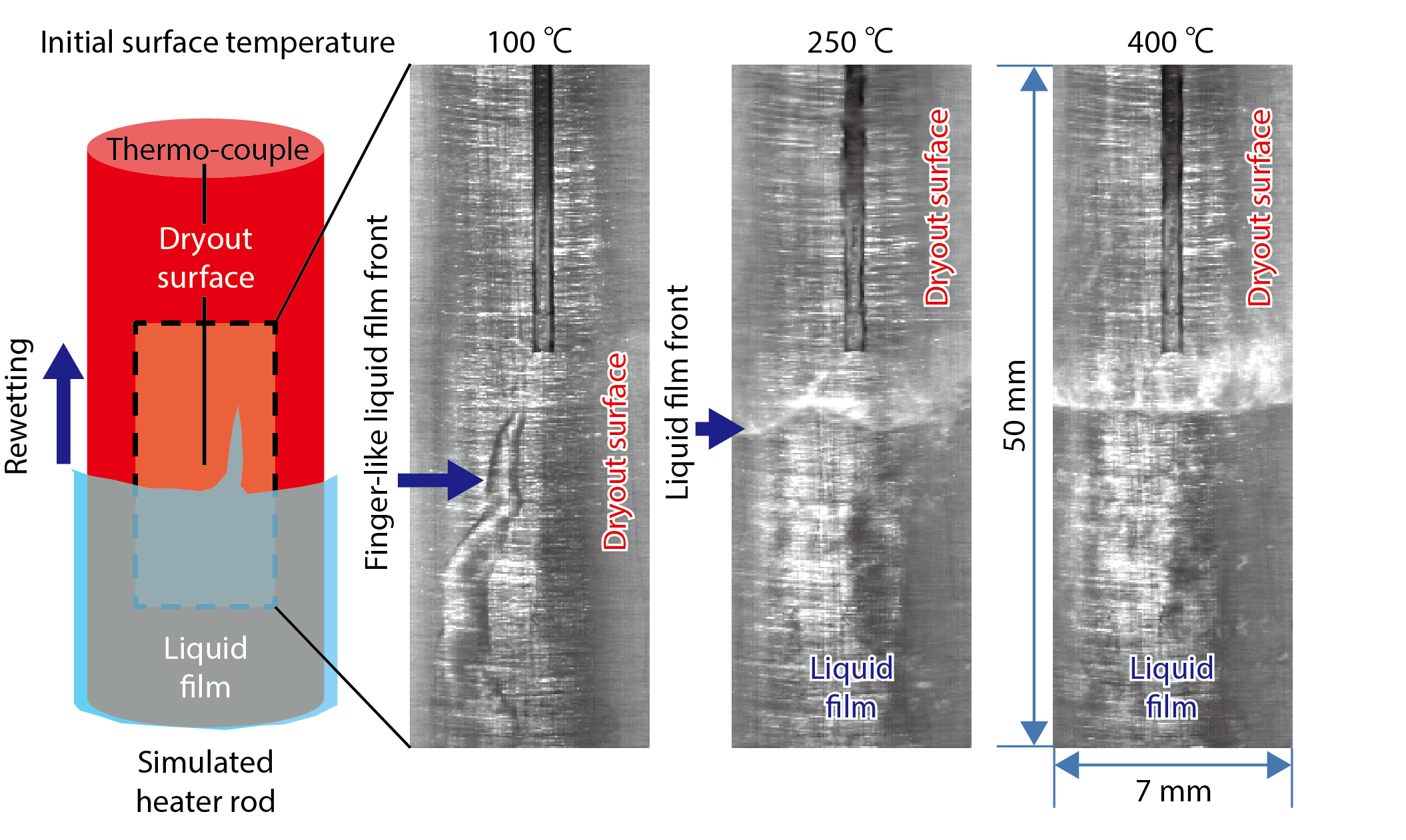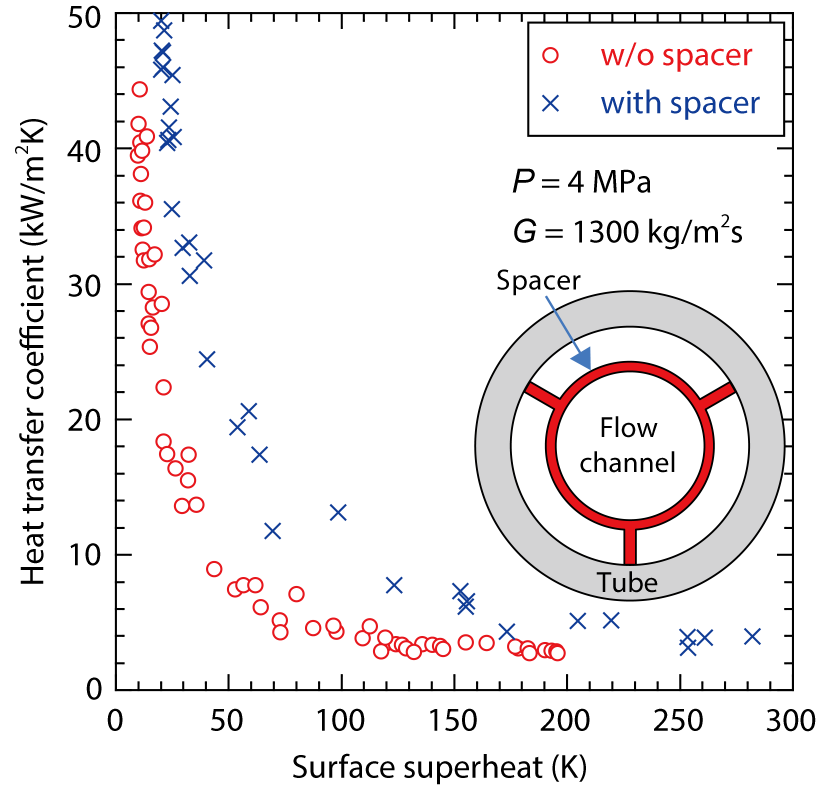
Fig.2-4 Visualization of liquid film front at rewetting

Fig.2-5 Spacer effect on heat transfer coefficient
If the core power abruptly increases for some reason in a light water reactor (LWR), there is a possibility that the surface of the fuel cladding will dry out. The increase of surface temperature caused by dryout should be suppressed to ensure fuel integrity. In the post-boiling transition (post-BT) standard of the Atomic Energy Society of Japan, the cladding temperature and dryout duration of fuel rods are used to evaluate the integrity of the dryout fuel. This standard was made on the basis of empirical correlations of the post-BT heat transfer to consider an anticipated operational occurrence (AOO). However, the new regulation established by the Nuclear Regulation Authority of Japan after the TEPCO’s Fukushima Daiichi NPP accident requires a consideration for an anticipated transient without scram (ATWS), which is a more severe thermal-hydraulic condition than an AOO. The ATWS condition is characterized by high pressure, high mass flux, and high heat flux, and there has not been sufficient experimental research under such conditions. Because the ATWS condition can deviate from the applicable range of the correlations, new correlations need to be developed. For this purpose, we are conducting experimental research with use of various types of test sections from atmospheric pressure to high pressure, simulating an actual plant condition. The atmospheric pressure apparatus had a visualization test section to gain an understanding of the dominant factor of the phenomena. The facility was used in the high-pressure condition for experiments to obtain validation data for a semi-mechanistic model.
The visualization experiments aimed to determine the mechanism of rewetting, which is the re-establishment of solid–liquid contact on a dryout cladding surface by liquid film propagation. The rewetting velocity is the factor that determines the termination time of the dryout, and its prediction is much important for evaluating the cladding temperature and the duration of the dryout. The experimental apparatus could visualize the liquid film front in detail. Fig.2-4 shows the visualization image of the liquid film front obtained by a high-speed camera. It can be seen in this figure that the front shape was finger-like when the initial surface temperature was relatively low, and it became substantially uniform in the circumferential direction with an increase in the initial surface temperature. From these results, we elucidated that the film front shape and number of droplets dispersed at the film front varied depending on the initial surface temperature and the liquid–gas relative velocities. These phenomena could be significant factors that govern the rewetting velocity.
In high-pressure experiments, we investigated the spacer effect on heat transfer in the flow of a circular pipe. A fuel bundle of the LWR was equipped with spacers to maintain the gap space among fuel rods. Under the high mass flux and high heat flux condition during the ATWS, the existence of spacers was considered to strongly affect the post-BT heat transfer. Fig.2-5 shows the measured heat transfer coefficient on the dryout surface of the circular pipe. In the case that the pipe was equipped with a spacer simulating the ferrule spacer of a boiling water reactor, the heat transfer coefficient increased over the entire temperature range. The enhancement of heat transfer was caused by a phenomenon in which the steam flow including droplets (annular dispersed flow) was disturbed around the spacer and the disturbance increased the droplet deposition onto the dryout surface. From the results of the experiments under various pressure and mass flux conditions, it was clarified that the spacer effect was more significant under a relatively low-pressure and high-mass-flux condition.
Based on the above knowledge, we are developing a model that can precisely predict the post-BT heat transfer.
The present study was sponsored by the Secretariat of Nuclear Regulation Authority (NRA), Japan.